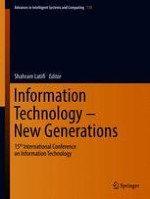2018 | OriginalPaper | Buchkapitel
9. Malicious Software Classification Using VGG16 Deep Neural Network’s Bottleneck Features
verfasst von : Edmar Rezende, Guilherme Ruppert, Tiago Carvalho, Antonio Theophilo, Fabio Ramos, Paulo de Geus
Erschienen in: Information Technology - New Generations
Aktivieren Sie unsere intelligente Suche, um passende Fachinhalte oder Patente zu finden.
Wählen Sie Textabschnitte aus um mit Künstlicher Intelligenz passenden Patente zu finden. powered by
Markieren Sie Textabschnitte, um KI-gestützt weitere passende Inhalte zu finden. powered by
